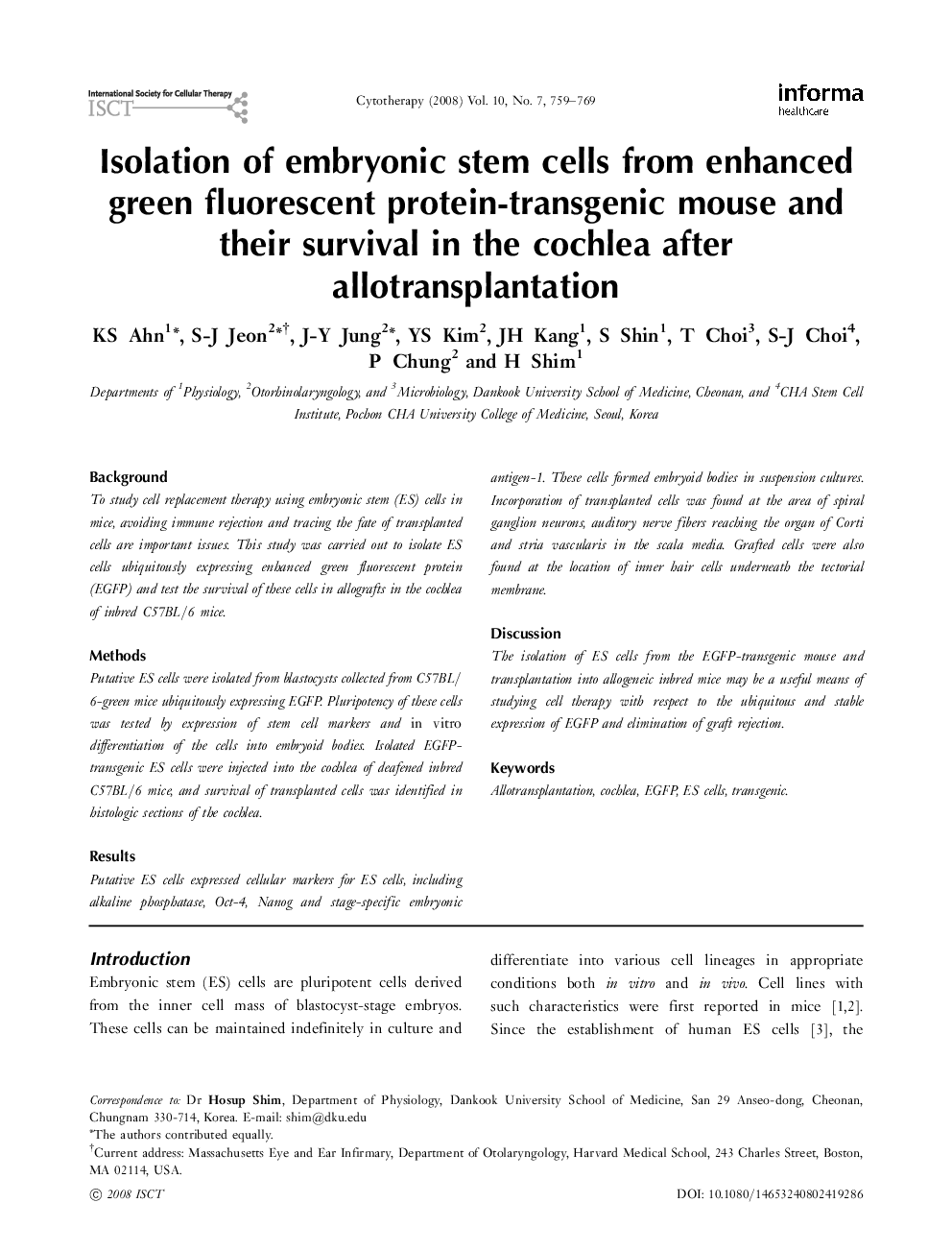| Article ID | Journal | Published Year | Pages | File Type |
|---|---|---|---|---|
| 2172426 | Cytotherapy | 2008 | 11 Pages |
BackgroundTo study cell replacement therapy using embryonic stem (ES) cells in mice, avoiding immune rejection and tracing the fate of transplanted cells are important issues. This study was carried out to isolate ES cells ubiquitously expressing enhanced green fluorescent protein (EGFP) and test the survival of these cells in allografts in the cochlea of inbred C57BL/6 mice.MethodsPutative ES cells were isolated from blastocysts collected from C57BL/6-green mice ubiquitously expressing EGFP. Pluripotency of these cells was tested by expression of stem cell markers and in vitro differentiation of the cells into embryoid bodies. Isolated EGFP-transgenic ES cells were injected into the cochlea of deafened inbred C57BL/6 mice, and survival of transplanted cells was identified in histologic sections of the cochlea.ResultsPutative ES cells expressed cellular markers for ES cells, including alkaline phosphatase, Oct-4, Nanog and stage-specific embryonic antigen-1. These cells formed embryoid bodies in suspension cultures. Incorporation of transplanted cells was found at the area of spiral ganglion neurons, auditory nerve fibers reaching the organ of Corti and stria vascularis in the scala media. Grafted cells were also found at the location of inner hair cells underneath the tectorial membrane.DiscussionThe isolation of ES cells from the EGFP-transgenic mouse and transplantation into allogeneic inbred mice may be a useful means of studying cell therapy with respect to the ubiquitous and stable expression of EGFP and elimination of graft rejection.
